We attended the New York Times’ Cities for Tomorrow conference last week to find out. I mean, we have an idea or two around this topic (hint: open, urban green spaces), but we were excited to hear perspectives from expert leaders and innovators from around the country.
In short? Here’s what we took away: successful cities respect urban culture. We’re talking neighborhood flavor, nuance, character, social fabric—these are all attributes that need to be understood, and respected, by leaders and decision-makers. The good, the bad, and the ugly. With an ear to the ground and a genuine understanding, cities can grow and evolve to be safer, stronger and more unified.
We love this sentiment. How uplifting it was to hear mayors, entrepreneurs, designers, and scientists rally behind this logic. We’ll share a few key highlights below—with a particular focus on urban wellbeing and environment.
Authenticity Matters.
Entirely inspiring—and of course entertaining—to listen to George Pelecanos and David Simon, the creative minds behind “The Wire” and the upcoming “The Deuce” talk about the importance of authentic urban storytelling. Amen to that!
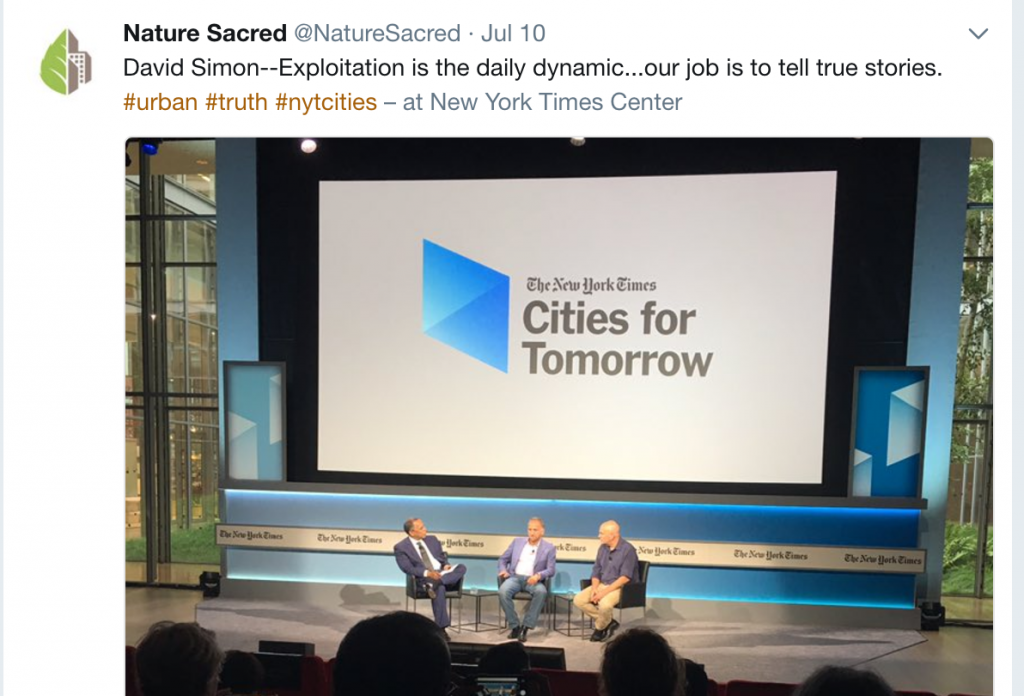
Saving a City
From here, we wholly consumed the film screening of Citizen Jane: Battle for the City. What a strong testament to the power of the urban community! It chronicles Jane Jacobs—a community activist fighting to save historic neighborhoods during a time of rapacious NYC redevelopment—and how success was made. See if it’s playing near you—it’s a fantastic way to spend 90 minutes.
The Politics of Affecting Change
OK. So, a mayor and a former governor walk onto a stage (Greg Stanton, Mayor of Phoenix & William F. Weld, Former Governor of Massachusetts)…to elucidate a very good question:
“In an era of hyperpartisan politics, how can local leaders govern effectively within the realities of state and federal ideological divisions?”

–> Mayor Stanton’s take: Listen to the people. And get stuff done.
–> Former Governor Weld’s take: Listen to the people. And know who to align yourself with. (Who’s kidding who, it’s politics after all!)
And you know what? Cities are really important today. While national issues are being debated, cities have the power to make smart, impactful decisions that will benefit their millions of citizens.
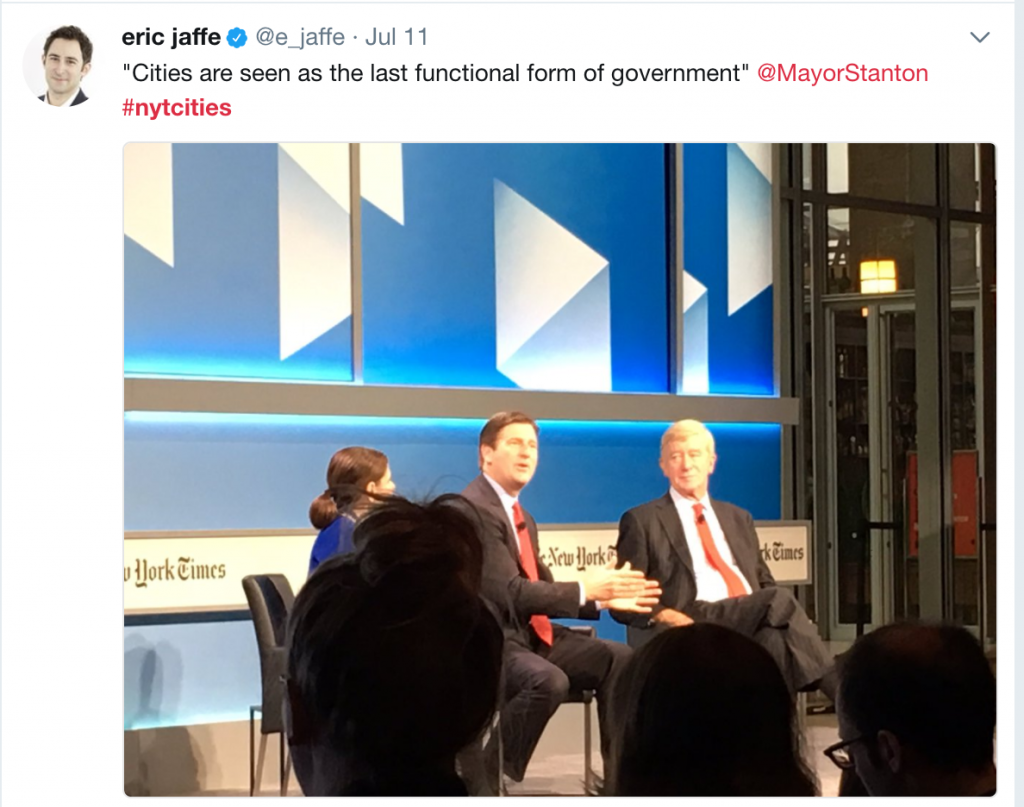
Short bursts of innovation
..to remind us of what’s possible—and inspire us to re-imagine our cities:
Aclima. Imagine having hyper-local data to help inform the ways you design a city. Identifying the healthiest places for schools and parks—how to better manage traffic. Aclima’s platform does that—using cutting edge technologies & sensors—block per block, minute by minute. (And apparently cost-effectively, too!)
Roboats. We can’t stop thinking about these automated, aquatic drone-like boats. Self-driving boats that monitor the health of the water (serving up real-time data), that can also transport goods and people — or create temporary floating infrastructures, like bridges or stages. The opportunities here are endless. Beta testing first in Amsterdam!

BlindWays. An app that basically uses GPS technology and crowdsourcing to help blind people find their ways to the bus (and more)—an only means of transit in many circumstances. Smart!
Climate Change.
Cities and leaders around the country today are strategizing bold, effective ways to tackle this critical issue: what can be done—really—now? Ernest J. Moniz, Former U.S. Secretary of Energy and Tom Steyer, Founder and President, NextGen Climate took this conversation on.
And here’s how it started. With fire.


And, onto solutions.
 Much discourse about cities taking the lead climate resilience and sea level rise adaptation. And, to think on mitigation as a cheaper and more reliable course of action. Yet, cities will need to work together to manage things effectively.
Much discourse about cities taking the lead climate resilience and sea level rise adaptation. And, to think on mitigation as a cheaper and more reliable course of action. Yet, cities will need to work together to manage things effectively.
3 keys to city climate prevention, per Tom Steyer:
– clean electricity generation
– electrify everything (cities, transit)
– increase energy efficiency
Smart building codes and better use of technology, big data and IoT were also referenced as ways to build cities’ resilience and combat climate change.
The opioid epidemic.
If there’s any topic that needs bold music-facing, it’s here. Every 7 hours, a New Yorker dies from overdose, per Mary T. Bassett, Commissioner, New York City Department of Health and Mental Hygiene. And that’s just New York. Chuck Rosenberg, Acting Administrator, U.S. Drug Enforcement Administration gave it to us straight—reminding us that the opioid demographic may not be what you think. Cities need to:
– arm first responders with knowledge and Naloxone for emergency overdosesUrge medical community to be more judicious in prescribing painkillers (gateway)
– inform the community—public awareness & call for united stance on “war on drugs” (Staten Island cited as a success story)
– interconnectivity among states (share database/s)
…were among some of the solutions discussed.
Seeing those in need.
And these two women—Margarette Purvis, President and C.E.O., Food Bank For New York City and Christine C. Quinn, President and C.E.O., Win—shot straight from the hip, serving up some real truths about homelessness and hunger in cities. They urged us to not be “blind about the hurt that’s going on in our cities”—and not simply think “shelter” when it comes to our homeless, but to think about decent conditions for transitional housing. Longer term plans.
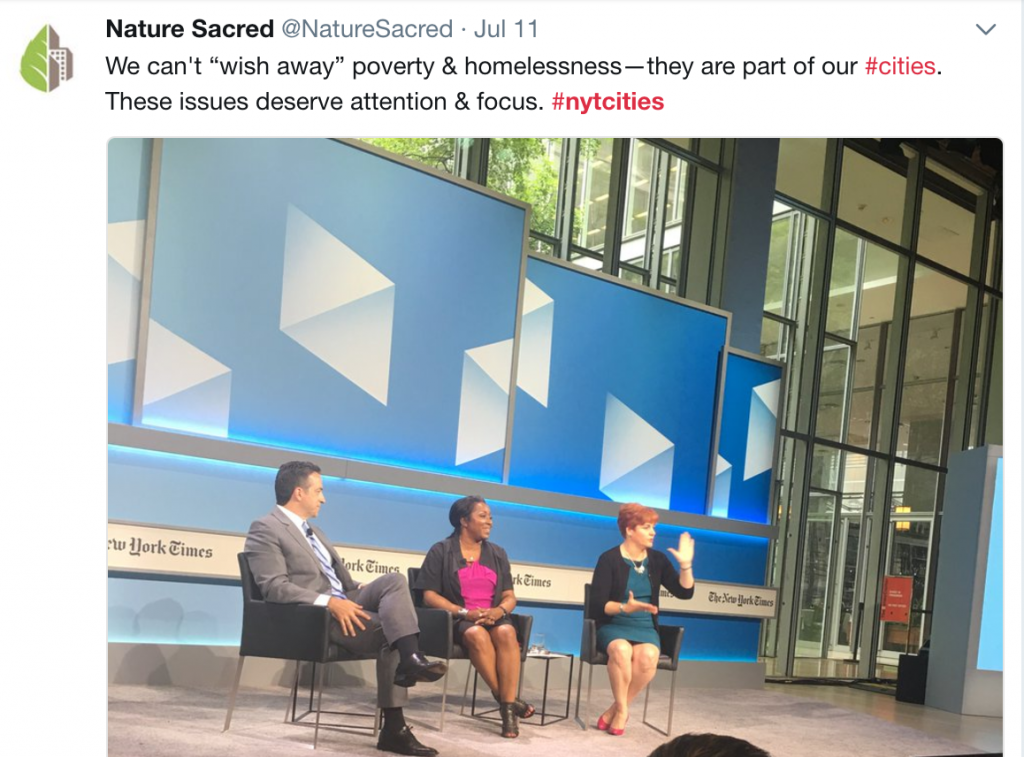
The future of cities? It’s green.
Naturally, urban green parks were a seminal part of this conversation about smarter, healthier cities of tomorrow. Green spaces. Vital. A refrain heard from many speakers.
Of particular interest to us was “The Art of the Park” session, where (the very esteemed) landscape architect Michael Van Valkenburgh talked about his urban projects across the country.
We were so excited, we tweeted. A bunch.
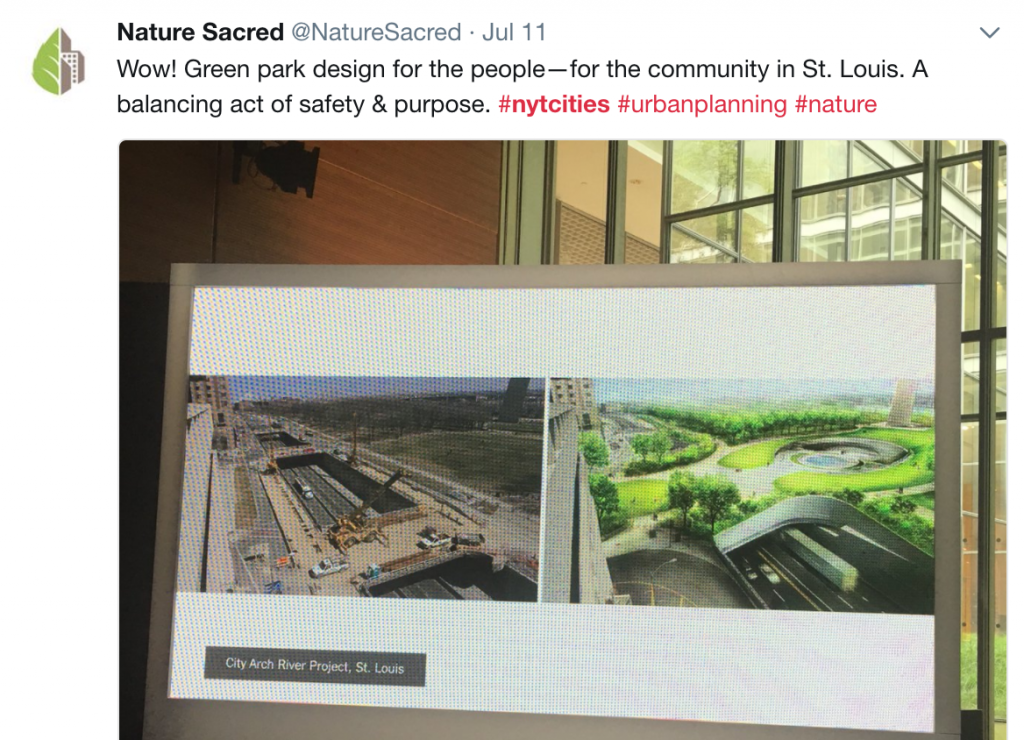
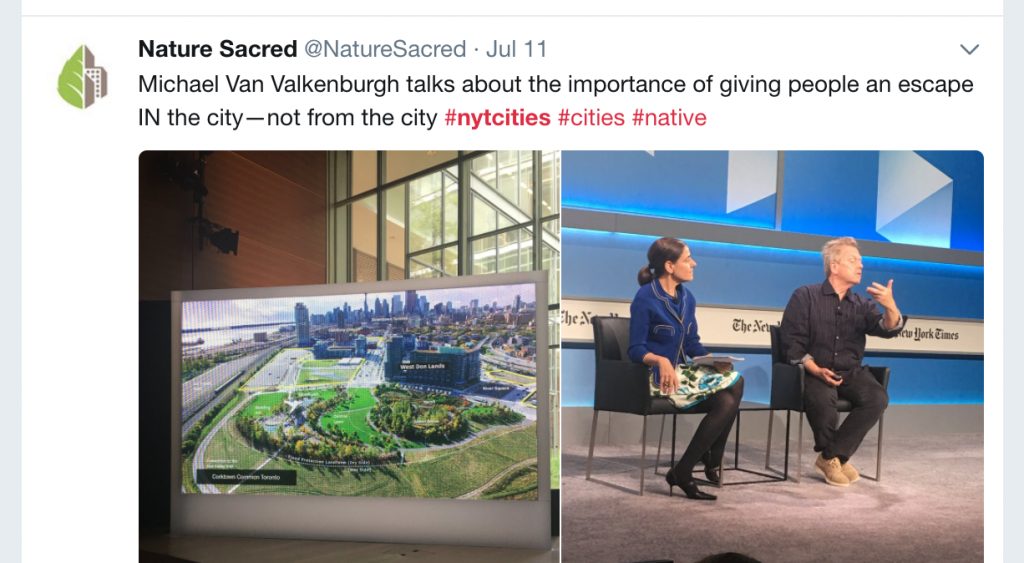
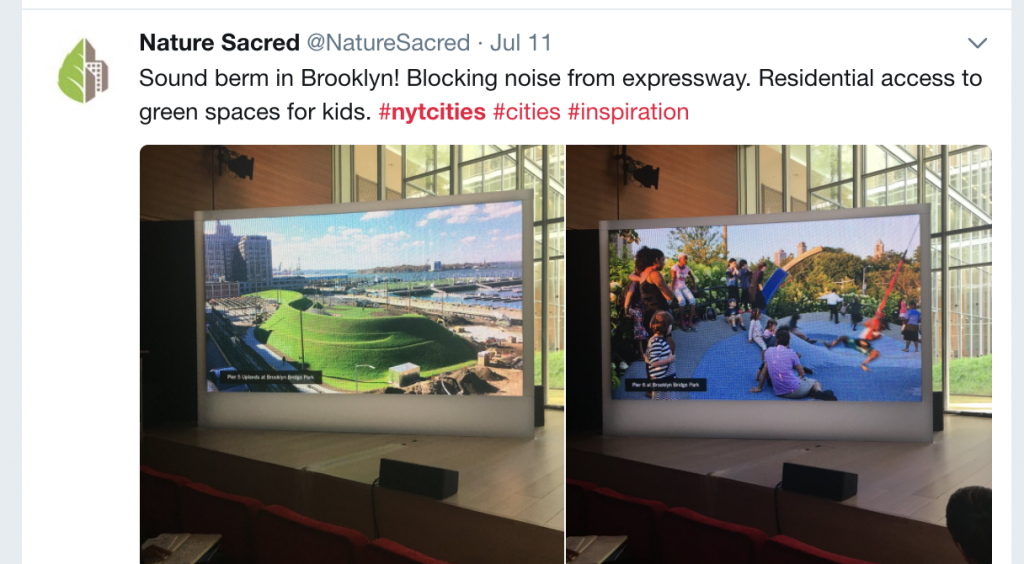
Of particular relevance to us: Van Valkenburgh’s sentiments on smaller, urban greenspaces. Not every community has the means to integrate expansive parks—but smaller, intimate, sacred spaces can work very hard to transform the wellbeing of communities as well. Especially when linked together. This is something we believe strongly in—25 years-strongly-in!

For cities looking to learn more about a green-networked city, feel free to download our “how-to” guide to creating systems of city greenspaces to get started.
This recap summarizes only part of the conference conversation. Check out the NYT’s gallery of all the conference sessions to experience the sessions first-hand. Let us know what you think!
